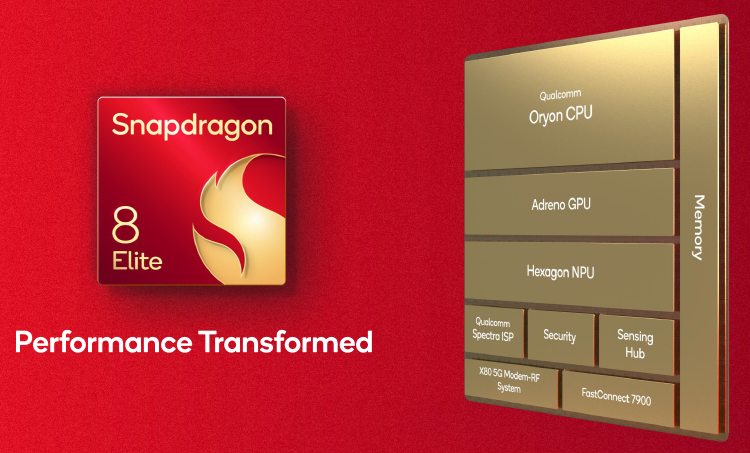Mobile Brands
Apple | Asus | Google Pixels | Honor
iQOO | Motorola |Nothing| OnePlus Oppo | Realme | Samsung | Vivo | Xiaomi

Most people choose their new smartphone based on its processor — the brain that drives performance, speed, and efficiency. But what actually makes one processor better than another? How do these chips work? And why does a 6-core processor sometimes outperform an 8-core one? If I’m not mistaken, many people don’t even know what a processor core is or how it actually works.
So, let’s clear the air — a smartphone CPU isn’t just a regular processor. It’s much more advanced. Modern smartphone chips come as a System on Chip (SoC), meaning they pack multiple components into a single unit. Along with the CPU, they include a GPU (Graphics Processing Unit) for visuals, an NPU (Neural Processing Unit) for AI tasks, an ISP (Image Signal Processor) for camera processing, and various controllers like the MC (Memory Controller) and DC (Display Controller). Unlike traditional computer or laptop CPUs, these all-in-one SoCs are designed to deliver maximum performance, efficiency, and intelligence in compact smartphone hardware.

A CPU is made up of multiple cores — for example, Apple’s processors typically feature 6 cores, while Snapdragon and MediaTek chips often come with 8 cores. In general, having more cores allows a processor to handle multiple tasks simultaneously, resulting in smoother multitasking and better overall performance.
A quick look, a CPU core is built from millions, sometimes billions, of transistors— tiny electronic switches that control the flow of electricity within a circuit. These transistors work together to perform calculations and execute instructions at incredible speeds. The CPU core itself is a fascinating subject, and I’ll be diving deeper into its history and evolution in a future post.
For instance, take the Apple A19 and Snapdragon 8s Gen 3 — the A19 scores around 2 million points on AnTuTu benchmarks, while the Snapdragon 8s Gen 3 reaches approximately 1.6 million. This clearly shows that performance isn’t solely determined by the number of cores, but also by how efficiently those cores are designed and optimized.
Not always, while having more cores generally means better multitasking and performance in heavy workloads, real-world results depend on several factors— such as architecture, clock speed, thermal efficiency, and software optimization.
In smartphones, not all processor cores are created equal — unlike in desktop CPUs. Most Android processors use a big.LITTLE architecture, which typically includes two high-performance cores and six efficiency cores. The efficiency cores handle everyday tasks like browsing, messaging, and background processes while conserving battery life. Meanwhile, the performance cores activate only during demanding activities such as gaming, video editing, or running intensive apps, delivering extra power when needed without compromising overall efficiency.
Apple Processor works the same with two high-performance cores and four efficiency cores
The clock speed of a CPU is measured in hertz (Hz). For example, a 3GHz processor can perform up to three billion operations per second. However, when handling demanding tasks like gaming or video editing, the processor generates heat, which can cause the device to slow down or even lag. This increased workload also leads to faster battery drain. In most cases, the CPU doesn’t operate at its maximum speed continuously to prevent overheating and maintain power efficiency.
It’s surprising to know that terms like 4nm, 3nm, or 2nm are often more about marketing than actual measurement. Before 2012, the nanometer scale referred to the transistor gate length, which could be physically measured. However, with the introduction of 3D transistors (FinFET technology), that definition changed completely — these structures can’t be measured in the same way as traditional 2D transistors. Today, when a company claims its processor is built on a smaller “nanometer” process, it usually means the chip is more power-efficient and packs more transistors in the same space, rather than having truly smaller physical gate lengths.
Alongside the CPU, every smartphone System on Chip (SoC) also includes a GPU (Graphics Processing Unit). The GPU is responsible for rendering images, videos, and animations — everything you see on your screen. It plays a crucial role in gaming performance, camera processing, and even visual tasks. By integrating the GPU within the SoC, smartphone manufacturers ensure faster data transfer between the CPU and GPU, improved power efficiency, and smoother overall performance — all within a compact, energy-efficient design.
The NPU (Neural Processing Unit) is a dedicated core within the SoC of modern smartphones, designed specifically to handle AI-based operations such as image recognition, voice processing, predictive text, facial recognition, and scene detection. By taking over these complex tasks from the main CPU, the NPU delivers faster performance and improved efficiency. It not only enhances photo quality and strengthens security through advanced facial recognition but also optimizes battery life by learning and adapting to user behavior.
Other specialized cores within the SoC also play vital roles in enhancing smartphone performance and efficiency. The ISP (Image Signal Processor) handles image processing tasks, reducing the CPU’s workload and helping conserve battery power while speeding up photo and video processing. The Memory Controller manages data transfer between memory and the processor, ensuring faster app loading, copying, and multitasking operations. Meanwhile, the Display Controller is responsible for managing the screen’s output, ensuring smooth visuals and efficient display performance.